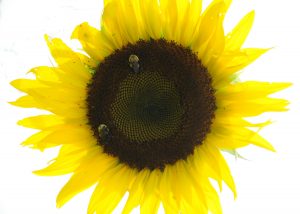By Larry Cooper, MA, Cert/KM
Director, Sustainability and Knowledge Management
Bio Huma Netics, Inc.
 Celebrating Earth Day every April 22 is a great time to pause and reflect: How are we, today, treating the environment and the plants, animals, and people who live in it? What have we accomplished in the past year that makes our planet a better, more sustainable place to live and raise our families? What are our goals for future improvement?
Celebrating Earth Day every April 22 is a great time to pause and reflect: How are we, today, treating the environment and the plants, animals, and people who live in it? What have we accomplished in the past year that makes our planet a better, more sustainable place to live and raise our families? What are our goals for future improvement?
In this blog, I provide a little historical perspective. How did Earth Day come to be? Why did it come about in 1970? What was life on the planet like before we started celebrating Earth Day? [Read more…]
 Football may be a game of inches, but farming is a business of fractional inches. Take planting. Seed placement is paramount to the success of a crop. Farmers spend lots of time calculating the optimum rate and depth to plant their seeds based on genetics, soil type, soil conditions, weather, management practices and the desired output of their crop.
Football may be a game of inches, but farming is a business of fractional inches. Take planting. Seed placement is paramount to the success of a crop. Farmers spend lots of time calculating the optimum rate and depth to plant their seeds based on genetics, soil type, soil conditions, weather, management practices and the desired output of their crop.  The theme of this year’s 49th annual Earth Day on April 22 is “Protect Our Species.” One extremely important aspect of this theme to everyone involved in agriculture is protecting the world’s insect pollinators. The global crop production pollinated by bees is estimated to be valued at $577 billion. Pollinators contribute $24 billion to the U.S. agriculture industry, making up a third of the food consumed by Americans.
The theme of this year’s 49th annual Earth Day on April 22 is “Protect Our Species.” One extremely important aspect of this theme to everyone involved in agriculture is protecting the world’s insect pollinators. The global crop production pollinated by bees is estimated to be valued at $577 billion. Pollinators contribute $24 billion to the U.S. agriculture industry, making up a third of the food consumed by Americans.